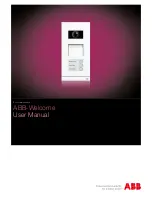
1
2
3
1 2 3
SPEED
off on
off on
BLA
BLA
BLA
PLAYE PLAYL
REC
1
2
3
4
5
2- AUDIO OUTPUT
Solder two wires between the
outer legs of the jack socket and
the two points of SP1 (the white
connector on the module). No
polarity here, you can solder them
any way you want.
Depending on the jack model, the
legs may look different. Refer to
the schematic to know how to
solder your jack.
3- LOOP
Solder two wires on the legs of a
toggle switch. Solder the two other
ends of the wires on the P-E points
on the module. These points are
located on the same two-columns
ensemble of points where VCC and
GND are.
Test the toggle switch. One
position starts playing and looping
your recording, the other stops it.
4A - SPEED
Solder 3 wires on 3 the points of
the chip holder, as shown on the
schematic. Use different wire
colors and note how they are
numbered.
Integrated circuits such as the ISD
chip are very sensitive to heat. We
removed it from its support so that
we can solder on it without
damaging the chip.
4B - SPEED
Mount the other toggle switch and
the photoresistor on the enclosure
faceplate. The switch goes in the
SPEED hole and the photoresistor
legs go through the two small holes
on the right.
Directly solder one leg of the photore-
sistor and one leg of the resistor to one
leg of the switch. Solder the wires
following the schematic.
5- REC and PLAY
To replace the small buttons on the
module, solder the two buttons on
the REC and PLAYL points on the
module using two pair of wires,
following the schematic. Again, no
polarity to worry about here.
Your circuit is complete ! Put the
batteries and the ISD back on its
support, and try the various
switches and buttons.
TEST YOUR CIRCUIT
- Plug headphones or amplified
speakers into the audio jack.
- Hold the REC button and speak in
the microphone. Let go of the
button.
- Press PLAYE. You should hear
your recording in full.
- Press and hold PLAYL. You should
hear your recording as long you
hold the button.
1- POWER
Solder one wire between the
positive leg of the battery holder
and the VCC solder point on the
module, and one wire between
the negative leg and the GND
point. Be careful of the polarity !
Put the batteries in and hold the
REC button. A red led should light
up. If not, check your connections
and the batteries.
THE FINAL CIRCUIT
REMOVE THE CHIP
Carefully remove the ISD chip
from its holder. Use a plier or a
small flat-headed screwdriver, to
progressively lever the chip out of
his holder from each side.
Note the orientation of the chip
with its writing and circular
markings. Keep it safe in a little
cup or a tray while you finish the
circuit.
BUILDING THE ENCLOSURE
Before getting started, you can use adhesive tack to temporarily assemble your
enclosure. When using glue, let it dry between each step.
1- Mount all components on the faceplate.
Put the switches in the same way.
For example : lever up to turn ON, lever
down to turn OFF.
2- With the two pairs of bolts
and screws, install the ISD
module below the faceplate,
the MIC facing its hole.
3- Glue the four sides and
the transversal « beam »
together by applying small
drops of glue on the inside,
where the edges meet.
4- Glue the faceplate on
top of the four sides, the
hole for the audio jack
toward the back.
Mount the audio jack
socket on its hole.
5- Once everything is in place,
put the batteries back on and put the
battery holder in the enclosure. Slide the
bottom panel in the slots to close the enclosure.
Do not glue the bottom panel !
You will need to remove it for changing the batteries, for repairing or
modyfing your Loopcard.




















